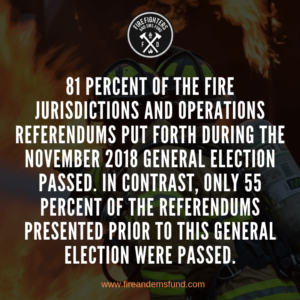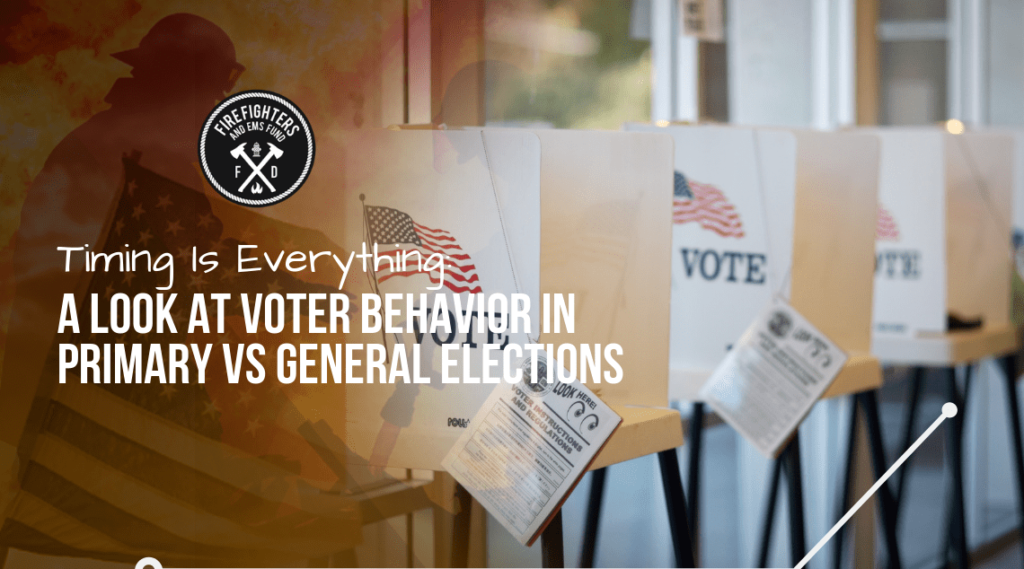An interesting element of the 2018 Fire and EMS Fund Referendum Study dealt with the idea of timing and how it affects the chances of a ballot measure passing or failing.
In the case of the referendums studied having to do with fire jurisdictions and operations, our data shows that 81 percent of the referendums put forth during the November 2018 general election passed. In contrast, only 55 percent of the referendums presented prior to this general election were passed. So what can explain this difference in voter behavior?
Studies show that primary voters tend to vote more along party lines and, generally speaking, have a higher level of interest and investment in the political climate. However, information also shows that the actual demographics of these voters, who are often classified as more extremist than their general voting counterparts, really aren’t so different from the others.
What may explain some of these behavioral differences, then, is simply the amount of knowledge and experience some of the primary voters may have over those voting in the general election.

Think of it this way: for the uneducated voter, the referendums presented for voting may make little or no sense, and the voter may be unfamiliar with the consequences or benefits of passing a measure.
For this reason, general election voters may actually be more likely to vote along party lines, which often seems the easiest option when presented with measures that are unfamiliar. Once the ballot leaves the top-ticket candidates about which many general election voters know more, the information is more muddled, less available.
In comparison, primary election voters, who may come out in smaller overall numbers, may have a wider base of knowledge about a measure. Also, in some cases these primary voters may have a long-standing opinion that is more difficult to sway.
These primary voters may be most resistant to elements such as tax increases (which many of the referendums studied by the Firefighter and EMS Fund requested) or even supporting/funding government services in general. This may be a source of explanation for the lower passing rate of the ballot measures we referenced in this study.
The voter behavior observed in the primary election versus the general election may also be a reason why more referendums were presented during the general election for a higher chance of passing.
In some cases, however, a measure that previously failed was re-presented for a vote in the primary election. This turned out to be a successful endeavor for a measure in Greenville, Wisconsin. The town had previously requested funding to build a new fire station to replace one that had been standing for 50 years.
Originally, the town had requested $10.5 million in funding for new facilities which were to include a new fire station. This request was denied by public vote, so the measure was restructured to only request $6.5 million for the new fire station. This measure was subsequently passed by voters.
Of course, the correlation here was likely not only due to timing but also to the new terms of the measure. However, those backing these referendums should utilize voter behavior in each type of election to determine the viability of passing the measure. This helps identify a timeline for campaigning for the passage of the referendum, which should always include accessible, clear education for the general voting public.
Our 2018 Fire Referendum Report provides some interesting analysis that fire jurisdictions will need to know in order to successfully request funding from voters. Click here to download the full report.







